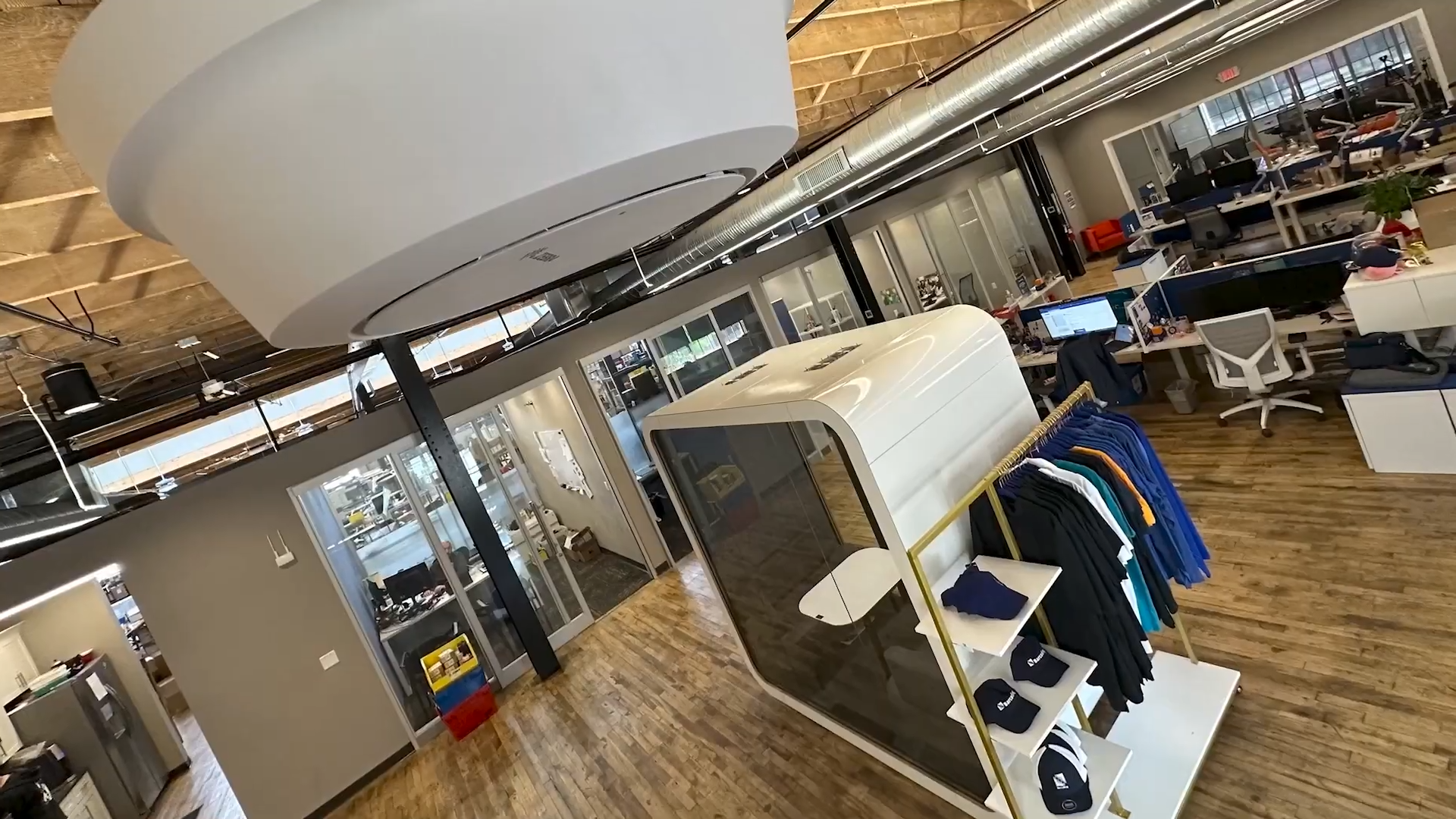At first glance, asset lifecycle management might seem like an IT system implementation, but let’s be real: Virtually everyone across your enterprise organization has some skin in your asset management game.
You know that effective asset life cycle management is critical for uninterrupted productivity, optimized workflow planning, and minimizing costs. But for maximum efficiency, it’s not only what your asset lifecycle management solution delivers, but how much easier it makes success for all those stakeholders.
The complex interdependence of departments, divisions, and even geographic locations can make transparency and visibility as hard to achieve as it is necessary. Ops, IT, Facilities, Procurement, and executive leadership—especially your CFO—are all internal customers of your asset lifecycle management system. And success in their roles depends on in-depth visibility and total clarity about all the assets.
And ultimately, when it comes time to make the case for investing in new solutions, the final decision often lies with the CFO. Here’s what you need to be prepared for your next CFO chat about asset lifecycle management solutions, based on 6 demands your CFO is going to expect from a solution.
1. Total Enterprise Visibility Into Assets & Consumables
Most organizations struggle with limited insight into asset inventories. Whether they’ve sliced-and-diced asset tracking by individual worksite, facility, location, region, or worse, data usually ends up in silos over time as a result of organic growth. If every building has its own set of spreadsheets, your asset dataset is more puzzle than source of truth.
If an asset gets lost, misplaced, or damaged and no one knows…did it ever really exist?
Your CFO needs every asset to exist, but that’s just a start. They also need to be able to slice and dice asset data by:
- Geographical location—Where are the assets?
- Department or division—Who owns the assets?
- Asset type or consumable item—What’s actually in your inventory?
- User data—Who uses them, how much and how often, and when last were they used?
Demonstrate that your solution can quickly and easily serve up the insights, whether your CFO prefers direct access to the asset management application or an integration with their ERP system.
And when you use a solution like IntelliTrack® that enables check-out/check-in of shared assets, Finance can see granular traceability, including maintenance and utilization data. That paints a much more complete picture for reviewing, forecasting, and budgeting. And all the data lives in one single location, so reconciling spreadsheets can be nothing more than a bad memory.
2. Comprehensive Real-Time Awareness of Asset Maintenance, Lifecycles & Depreciation
The power of comprehensive enterprise asset visibility means it’s possible to know in just a few clicks, from wherever you are, exactly where a device is—not just geographically, but in time:
- How many years are left in an asset’s life cycle?
- When is it no longer supported by the OEM?
- What’s its preventive maintenance schedule?
- Are spare parts or a new battery needed to maintain device health?
- Has it reached full depreciation?
These are important questions to answer from an operational standpoint. Automatic notifications that trigger maintenance actions prevent downtime, support optimal performance, and keeps risky unsupported devices off your networks. But the data matters for your CFO’s budgeting and planning responsibilities, too.
If you can unify enterprise data covering all these details, you can deliver awareness verging on certainty—that every asset is not only accounted for, but properly maintained for optimal performance and return on investment.
3. Budget & Cost Data to Streamline Planning
Building capital and operational budgets requires accurate hard data on the state of your assets. Without comprehensive visibility, finance can only make guesses about how much to allocate for maintenance, upgrades, and replacements.
And let’s say the data’s all there—somewhere—in a jumbled pile of Frankenstein spreadsheets. The longer it takes to assemble, standardize, and reconcile the data, the less fresh it is when you finally get around to using it.
Your view of assets, their costs, and what’s needed to keep them serving the needs of the business in the year ahead? It’s only as clear and accurate as your data.
But if you can quickly and easily generate asset-level cost reports directly in the solution—or via integration with a finance system—that’s powerful information. Add your asset health and maintenance data, and you’ve got a refresh budget. And when all company assets are in one place, that full budget and refresh planning is just so much more efficient. More effective, too, since there’s no guesswork and the data’s always fresh.
It’s easy to understand, too. See operational budgets in action, regionally or at the site level. Automate regular reporting intervals to stay ahead of equipment maintenance. Set fulfillment thresholds for consumable inventory so operations never runs out of vital items like labels or printer ribbons.
Welcome to the digital transformation, where it’s easier to understand the total cost of asset ownership. Get spend visibility to drive volume discounts. Build data-driven budgets that optimize your refresh cycles. Let automated analytics do some of the heavy lifting to make spend forecasting and planning not just easier, but better.
4. Fast & Easy Reporting, Scheduled & Ad Hoc
Your CFO wants asset insights at their fingertips without a long wait or hassle. And yet, all those ad hoc status requests drain IT productivity. And siloed asset data makes compiling reports labor-intensive and error-prone.
It shouldn’t have to be difficult or time-consuming to trigger reports based on asset status changes or consumable inventory thresholds. A solution like IntelliTrack with its robust reporting engine can deliver scheduled reports and on-demand insights with no IT help required. Asset status reports, maintenance dashboards, spend analytics—all fully customizable. Export, print, or display dynamic reports with a few clicks to use for monitoring, planning and budgeting, and to keep key stakeholders informed at a glance.
5. Unified Visibility to Optimize Procurement
When asset visibility is limited, procurement suffers, too. They can end up purchasing devices without understanding current inventories, utilization rates, performance, or maintenance contracts. Opportunities for volume discounts are missed.
Comprehensive visibility makes strategic sourcing decisions data-driven. See what assets are purchased by each department and at what price points. Identify opportunities to improve supplier relationships, pricing, and support. With the data they need available on demand and all in one place, procurement is better-informed, more effective, and just…smarter.
6. Enterprise Risk Reduction
Here’s something your CFO might not ask for outright, but they’re guaranteed to appreciate it.
End-of-life, unmaintained, or unaccounted-for devices expose the organization to potentially costly financial, compliance, and security risks. Effective asset lifecycle management mitigates those risks.
Automated alerts for status changes to high-risk assets enable IT to address issues before costly problems have a chance to happen. Automated check-in/check-out logs deliver up-to-the-minute accountability, oversight, and risk mitigation any CFO can appreciate.
Share Visibility Without Diluting IT’s Effectiveness
With the right asset and inventory management solution, your teams can give stakeholders access to exactly what they need in terms of access, data, analytics, reporting, and insights. And you can provide that access without putting the data at risk, with user-specific controls over access and reporting.
So everyone gets what they need—without waiting, taking up IT’s time on reporting, or putting your data at risk. It’s how your whole business moves beyond spreadsheets to true, enterprise-wide visibility and control. Making the case for investment is easy when you can connect it to the metrics that matter most.
Learn more about the ways IntelliTrack streamlines the work by delivering accurate, on-demand data for your most demanding enterprise stakeholders. See what it can do across IT, Ops, Procurement, and Finance.







